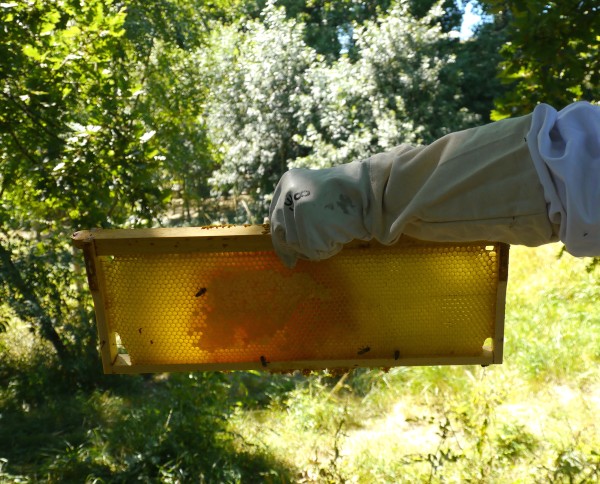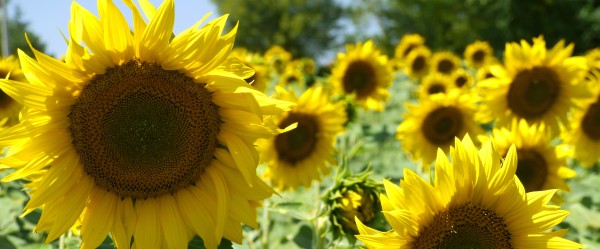WARNING : this post contains yet more pictures of bees on sunflowers.
However, in an effort to mix it up a bit, I have tried playing around with some of the sunflower pictures, trying out various photoshop effects. Here is one of the sunflower field in front of our village church…
With the sunflowers in full throttle, Hive B has been extended by adding a super.
We aren’t terribly optimistic that those additional frames will be full to busting come the end of the sunflower season. The bees haven’t been in residence that long, and with the rotten weather in May and June, they are still establishing themselves in the brood box.
We do however have higher expectations for Hive A.
I am now noticing alot of mobile hives in the fields around and about, and cannot decide if this is a new phenomenon or whether its now something that I can easily spot. Just wondering about the levels of competition for the pollen / nectar.
And finally, the obligatory bees-on-sunflowers shots…









